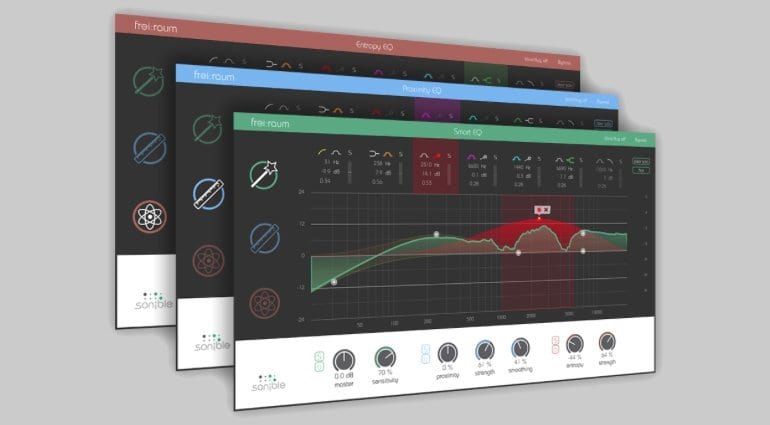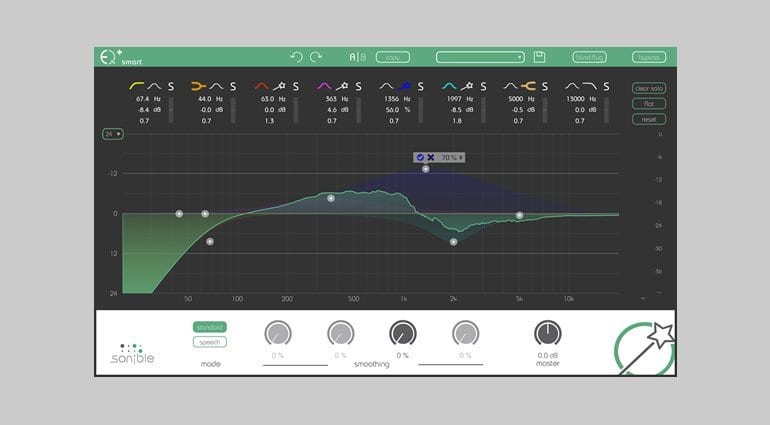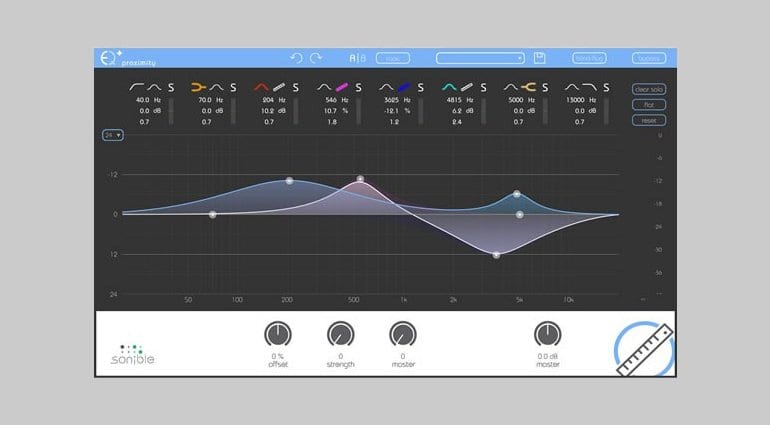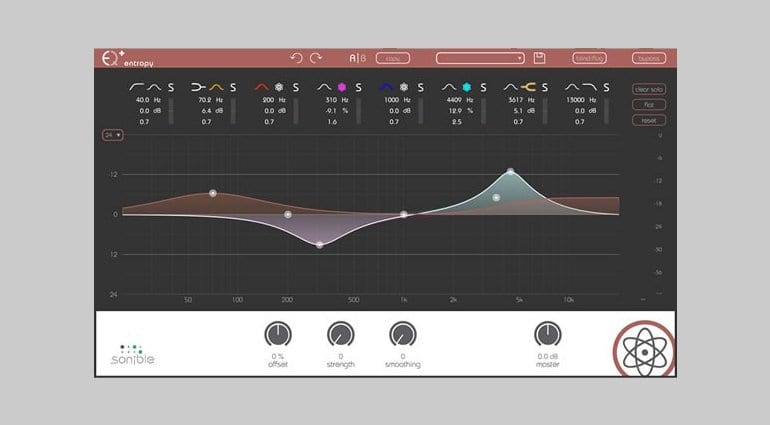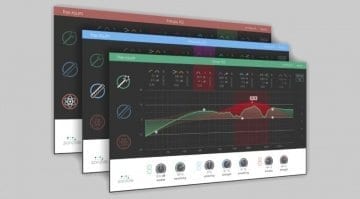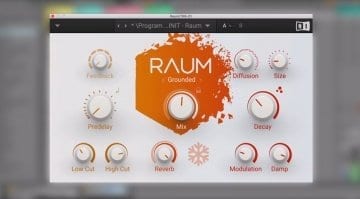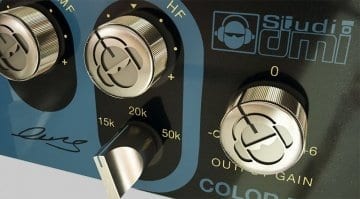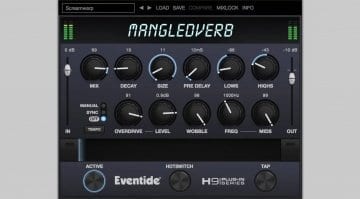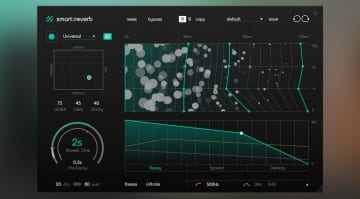Sonible release FREI:RAUM, a hat-trick of new EQs
A bundle of new EQ plug-ins; Smart EQ, Proximity EQ and Entropy EQ
Frequency equalisation must be one of the oldest tricks in the handbook of producers and engineers. However, this year has already seen several manufacturers approach it quite differently, offering new and interesting methods. Frei:raum by Sonible is the latest collection of EQ tools, which offer an entirely new way to apply EQ. They claim you can create a perfect spectral balance, hone reverberant recordings or emphasise dynamics in a tonal fashion. Sounds interesting…
Frei:raum includes 3 EQ plug-ins; Smart EQ, Proximity EQ and Entropy EQ. There are some really interesting prospects on offer here, which has taken me some time to understand (no thanks to their brief website and promo videos). Apparently these plug-ins claim to be linear phase too, which, if true, makes for a very creditable release. Whilst there’s a lot to be applauded here and some of this tech looks quite exciting, I remain sceptical until I try them for myself. What do you think?
Smart EQ
You are currently viewing a placeholder content from YouTube. To access the actual content, click the button below. Please note that doing so will share data with third-party providers.
In a very loose manner, I suppose you could liken Smart EQ to iZotope’s latest offering, ‘Neutron‘. The significant difference being the target these plug-ins are trying to achieve. Neutron attempts to take your mix as a whole into consideration, where Smart EQ is presumably looking to achieve a theoretical ‘flat frequency response’ on a source by source basis. The idea here, in ‘smart’ mode, is that the plug-in will calculate a more desirable EQ curve to achieve what it is you’re entering manually. It takes about 10 seconds for the plug-in to learn what the source sounds like. Presumably, it then compares that to a flat response. From there, it will attenuate a curve based on your input, that is supposedly more appropriate to that source. Clever stuff, and apparently very quick to use too.
On the face of it, this looks really clever and some demo’s I’ve heard sound very effective. Is it musical, though? Although I love the idea, the jury is out on that one. I have two questions for Sonible: if the plug-in takes 10 seconds to learn the source signal, why not have a continually updating detector so the curve changes and improves with the audio? For example, a vocalist might back-off the mic at one point, but the EQ could compensate for a loss in warmth. (I’m thinking back to the Surfer EQ 2 release in September this year.)
Secondly, they claim all these EQ’s are linear phase, which is quite impressive. But the second question would be: isn’t it common knowledge that the more detailed an EQ curve becomes, the harder it is to achieve linearity? At least, it can be a contributing factor towards adding extreme amounts of latency. I wonder what the latency/delay compensation of this plug-in is, or if it is in fact linear.
Proximity EQ
You are currently viewing a placeholder content from YouTube. To access the actual content, click the button below. Please note that doing so will share data with third-party providers.
This is a much simpler EQ plug-in to understand. In short, it enables you to alter the amount of direct source with the captured ‘space’ that is found on the recording. For example, you can use it to dry out a signal and therefore that element in your mix should appear closer. Alternatively it could be used to emphasise the natural reverberant sound on a recording rather than adding a reverb plug-in. Of course, being an EQ-based plug-in, this technique can be added anywhere in the frequency spectrum. iZotope’s De-reverb plug-in can do something similar, but not with this level of ‘ease-of-use’.
Entropy EQ
You are currently viewing a placeholder content from YouTube. To access the actual content, click the button below. Please note that doing so will share data with third-party providers.
Finally, the red coloured plug-in in the Frei:ruam RGB spectrum is Entropy. This can be used in a similar, but perhaps more musical fashion than a transient designer. Effectively it allows you to work with the attacks and sustains across the frequency spectrum. Again, this year we saw Sonnox release Envolution, which can also work with transients at different frequencies. The difference here however, is the 8-band EQ approach and the detection of the plug-in. Apparently, it doesn’t just look for differing dynamics in the source material, but also considers the harmonic content of the attacks and sustains. This could be the most exciting of the 3, falling in-line with mixing trends of today.
More Information
Head over to the Sonible website for some more information on these new plug-ins. However, just like their videos above, the site doesn’t offer a huge amount of info. To really understand what was on offer here, I had to spend some time perusing YouTube demos. Available directly or via the likes of Thomann, Frei:raum will set you back around 230 GBP. Quite pricy I think for modern plug-ins, but I suppose you are getting 3-in-1.

